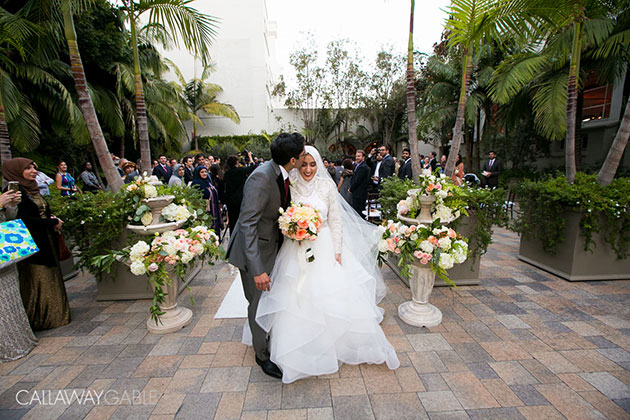
Photo: Callaway Gable
One of the best parts of getting invited to a wedding is seeing the different ways that each couple celebrates their love. Religion can often play a big role in how the celebrations unfold, and a Muslim wedding is no exception. Muslim wedding rituals vary depending on the couple’s cultural background (such as Arabic or Indian), but a majority of the main components remain the same. Here are the most important aspects of a Muslim wedding ceremony.
Mehndi
Also known as henna, mehndi is a skin decoration that is applied to the bride’s hands and feet, as well as to those of other women in the bride and groom’s family. This festive, colorful celebration includes lots of music and women in traditional lenghas.
Barat
The Barat is the groom’s arrival at the bride’s home. You may see a groom riding in on a decorated white horse, surrounded by revelers. With lots of music and dancing, the bride’s family welcomes the groom with a floral garland and sweets.
See more: 11 Traditional Wedding Vows to Steal from Religious Ceremonies
Nikah
This is the ceremony in which the marriage license is signed. The nikah ceremony is essentially the groom’s formal proposal (with at least two witnesses in attendance), as well as the couple’s acceptance of the marriage contract. In a more traditional marriage ceremony, the bride’s father or another representative will agree to the marriage contract on her behalf. The nikah is more of a legal agreement than a religious ceremony, so this is often followed by a sermon, which may include readings from the Quran. Muslim wedding ceremonies do not always include vows — agreement to the marriage contract during the nikah suffices as agreement by the bride and groom to enter into marriage.
Valima
The valima is the reception, usually hosted by the groom’s parents. Traditionally, the valima takes place the night after the wedding, though it can also immediately follow the Nikah.
